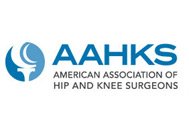Healthcare News
How to Relieve Hip Pain
Finding the right treatment to relieve hip pain often depends on what's causing it. Conservative measures like pain relievers and home remedies can be used for a sudden, isolated injury. Physical therapy, injections, and surgery may be needed for more chronic or complicated causes of hip pain. Some strategies, such as an osteoarthritis weight loss plan, may be effective for long-term pain relief.
9 Home Remedies for Knee Pain
As you may be painfully aware, knee pain is very common. Global estimates suggest that more than 1 in 5 adults age 40 and over experience this type of joint problem, and knee pain in men and women in the United States increases steadily after age 60. Here are some of the best home-based ways to help your knees feel and function better.
More women report hip fractures earlier in life, research finds
Older women with low bone density are more likely to experience their first hip fracture in their 60s compared to older ages, according to research being presented Sunday at ENDO 2024, the Endocrine Society's annual meeting in Boston, Mass.
What to expect during rehab after hip replacement
Hip replacement is a major, arduous elective surgery, and rehabilitation afterwards takes time, according to an expert from Johns Hopkins Medicine in Baltimore.
‘Don’t push into pain!’ How to rescue your knees from everything from torn ligaments to injured tendons
From runner’s knee to fraying cartilage, knees are involved in 40% of sports injuries. But it can be hard to pin down what’s wrong, or what to do about it. Just because knee issues are common, that doesn’t mean we should ignore them and soldier on.
What Is Iliopsoas Bursitis?
Iliopsoas bursitis, also called hip bursitis, is inflammation of the iliopsoas bursa. This bursa is a large fluid-filled sac found under the iliopsoas muscle, which supports hip movement. The iliopsoas bursa provides cushion for tendons, ligaments, and muscles to prevent friction during movement.
Self-administered acupressure reduces knee pain with suspected osteoarthritis
The analysis included 314 participants randomly assigned to acupressure twice daily for 12 weeks or a control education session on knee health.
Femoral Nerve Block Cuts Opioid Use in ACL Reconstruction
For patients undergoing anterior cruciate ligament (ACL) reconstruction, a femoral nerve block (FNB) is associated with a lower incidence of excessive opioid consumption than adductor canal block (ACB), according to a study
Nose cartilage-based knee joint treatment project receives €2.3 million funding
Treating knee joint defects with cartilage from the nose: The University Hospital in Würzburg is working on the approval of this procedure. They received funding of 2.3 million euros for this purpose.
Survival rates after hip or spine fracture worse than for many cancers
Scientists have gathered a body of evidence about mortality outcomes in patients over 50, but survival rates following bone fractures are not often included in the statistics available to patients or caregivers. The aim of this current real-world population-based study of close to 100,000 subjects was to show the post-fracture prognosis in people over 65 years by examining the overall survival by gender, age groups, and types of fractures, using the database of the Ontario, Canada public health care system.











